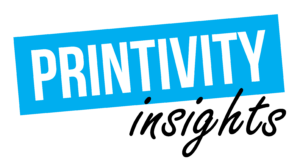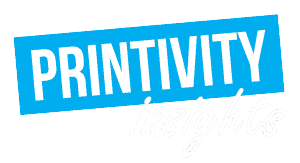Last updated on July 7th, 2021 at 04:37 pm
The first retail catalog in the U.S. was published in 1845. But it wasn’t until 100 years later that catalogs began to grow in popularity. For the next three to four decades, product catalogs became an important marketing tool for most large retailers.
Starting in the early 1990s, marketing catalogs went into a period of decline. Retailers still published them, but consumers increasingly turned to the Internet to make retail purchases. Instead of flipping through page after page to find what they wanted to buy, consumers only had to type in a few keywords to have all the product information instantly displayed in front of them. These days, consumers can also access customer reviews, price comparisons, shipping options, and more, all with just a few clicks of a button.
Over time, marketing professionals began to realize that catalogs still have an important role to play in today’s digital marketing world. Catalogs began making a comeback, and once again large numbers of consumers look forward to receiving catalogs in the mail from their favorite retailers. If you operate a retail business, here’s why you should have a printed catalog.

1. Catalogs influence purchasing decisions by your target audience
Catalogs often have a stronger influence on purchasing decisions than television advertising or websites. In fact, nearly 75% of people surveyed by the U.S. Postal Service said that catalogs make them more interested in the retailer’s products. More than eight out of 10 said they have purchased an item after seeing it in a catalog.
One reason catalogs work is that they are active rather than passive. Direct mailings are more tangible than looking at a computer screen. They require the recipient to do something with it. Often, that “something” consists of making a buying decision.
2. Multi-channel shopping and buying is on the rise
Today’s shoppers have many shopping channels – brick and mortar stores, web sites, social media, and the phone. Catalogs inspire consumers to buy through other channels by creating awareness and introducing new ideas. They are most successful when used as part of a multi-channel marketing strategy to drive customers to e-commerce sites to make their purchases.
3. Catalogs make excellent high-quality content marketing tools
Since the dawn of mankind, people have engaged through stories, and content marketing is all about telling stories to attract and retain customers. In addition to educating people about your products, catalogs allow you to use stories and images to take readers on a journey. Presenting your products in this manner has a powerful impact on consumers that connects them to your brand on an emotional level.
4. Millennials love direct mail
Millennials are a very tech-oriented generation, yet they love to receive traditional mail. Partly because they feel inundated with digital media, but also because physical mail stands out in today’s high-tech world. Millennials also have a preference for visual content, and direct mail stimulates their senses. According to the U.S. Postal Service, Millennials spend more time sorting mail than other age groups and appear more engaged with mail than the average consumer. In truth, all generations like direct mail; Millennials feel the most connection with it.
5. Physical media produces a stronger emotional response
As individuals, we rely heavily on sight, but touching and feeling is the most human of senses. Catalogs stimulate multiple senses at the same time. They also give consumers an opportunity to slow down and allow themselves to be transported through images and stories. This process creates positive emotions and memories that get linked to the products in the catalog.
6. Catalogs support a multi-channel marketing campaign for print and digital
In today’s world, effective marketing presents a consistent brand message through both print and digital channels. They also get customers to interact with the message. Catalogs provide an effective physical platform for digital technologies such as augmented reality, dynamic QR Code®, near field communication, and more. Engaging consumers with interactive experiences drives them to websites, mobile apps, social media, and other digital mediums.
7. Catalogs drive action
Ultimately, all marketing tools come down to one issue: do they produce results? With catalogs, the answer is yes! The USPS survey also determined that direct mail, such as catalogs, produces better recall over longer periods, stronger brand associations, and deeper emotional connections. In addition, catalog mail dates, customer and source codes, and other targeted criteria make catalog performance easy to track.
Tips for success
By now, you’re beginning to see the value of catalog marketing. Here are a few tips for creating a successful catalog.
- Get to know your customers. Start by gathering demographic data such as age, gender, income, and interests. Then, learn what your audience is looking for when it comes to purchasing and using your products, and why they choose your products over those of your competitors.
- Design for your target market. Print catalogs work best when designed with your target audience in mind. Use the data gathered during market analysis to select colors, graphics, language, tone of voice, and other design elements that match what your customers are looking for.
- Highlight your most popular sellers. Identify the products that are most popular with your target market, then focus your catalog on those items. The front and back covers and the first page have the biggest impact on readers, so be sure to feature your best-selling items on those pages. When designing pages to convert interest into sales, look at product descriptions, pricing, and other pertinent information from the buyers’ point of view.
- Use high-quality print. Even the best designed catalogs can lose their impact with low-quality printing. Using a reputable printer with a track record of quality printing and great customer service printing will ensure your catalog represents your brand in the manner you want. If you’re printing a catalog for the first time, be sure to tap into the printer’s experience for assistance in selecting the best paper size and quality, binding, and other print elements for your catalog.
Distribution
One of the most important elements in catalog marketing is when, where, and how to distribute your catalog.
Start with direct mail. Get rid of the idea that it is an outdated, ineffective approach – it’s just the opposite. Direct mail allows you to target your market with precision. You can also reduce mailing costs by targeting distributions to specific consumer criterion. The USPS survey showed that 84% of people like receiving catalogs in the mail, and the average time for keeping those catalogs is 20 days. Most importantly, well designed catalogs also generate good response rates.
Give away a catalog with each purchase. This includes both online and in-store purchases. Let customers know they can sign up to receive your catalog, and then make it easy to do so online. Be sure to include a “receive our free catalog” call to action in your shopping cart and on every product page.
Keep in mind that in today’s marketing world, print, and digital don’t compete. Instead, effective marketing uses the strengths of each medium to augment the other. Print catalogs offer a powerful tool for reinforcing your web site, directing customers to your other digital marketing tools, and driving sales.










